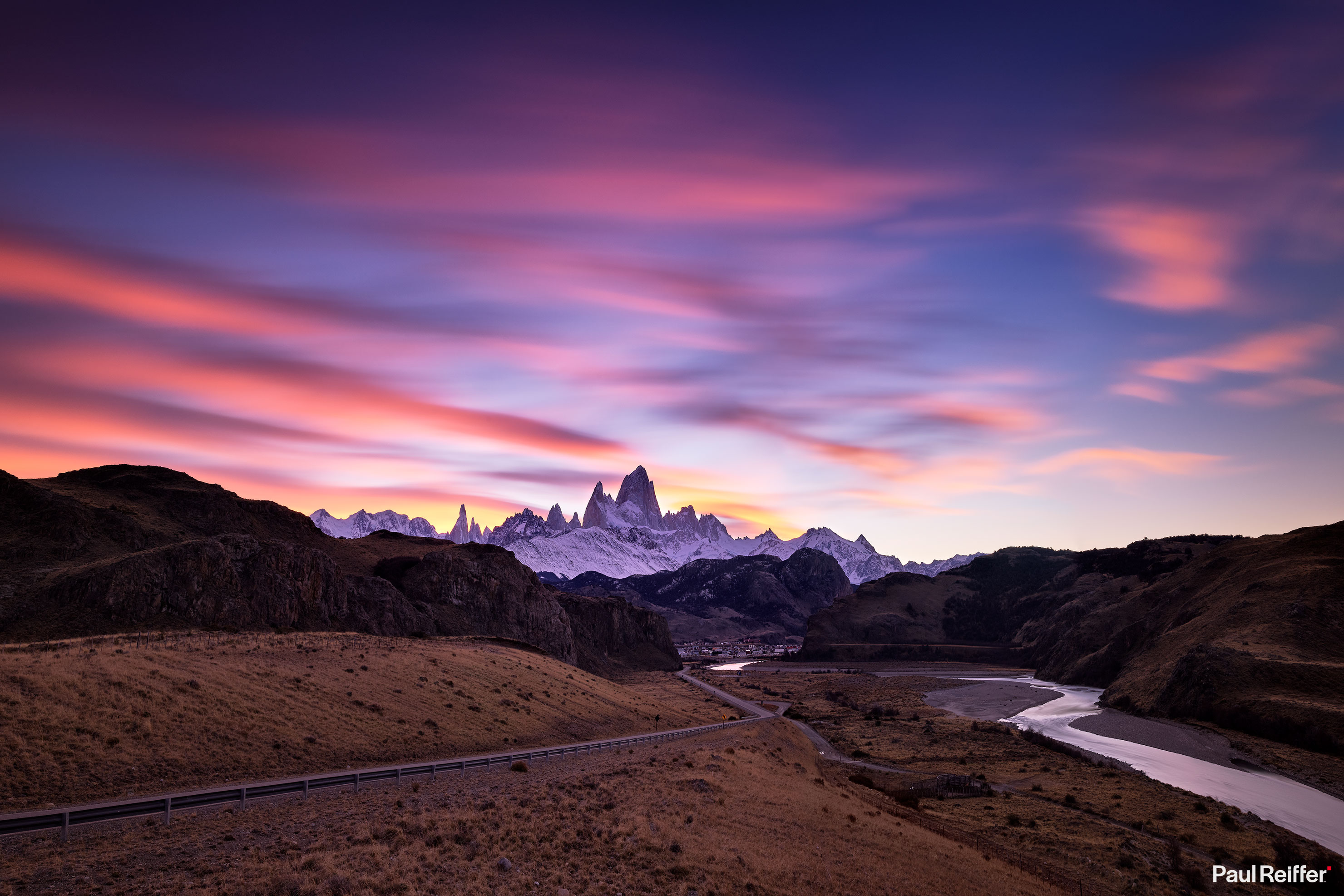Nearly a year on, and we return to “Part Two” of my Patagonia trip – following on from the time already spent in Chile’s Torres Del Paine National Park.
It turns out, there’s a LOT of paperwork involved in taking a car from Chile to Argentina – something that Mark had (luckily) flagged before we picked it up in Punta Arenas. Without all these documents (and fees) being arranged when you collect your car in Chile, you can forget taking it across the border, and in winter months that leaves very few options…
With that in hand, however, the process of crossing into Argentina was a simple one – but the immediate differences were profound. Within a few metres of driving across, the paved roads came to an abrupt end, and we were stuck driving on potted mud roads for miles to come.

Not only had there been a change in roads, but within an hour, we found ourselves transported from winding mountain roads and sunny skies to snow-covered tracks and harsh winds that battered the car from all directions.
Until, that is, we turned one huge corner – and as if by magic, the stunning view of El Chaltén nestled in the foothills of Mount Fitz Roy appeared in the distance. And what was this we were driving on? Paved roads once more? Perfect!

The arrival into El Chaltén was a marked difference to not only the wilderness we’d driven through, but also the solitude we’d experienced in Lago Peho, Chile for the previous few days. Clearly a backpacker’s and trekker’s town, even the main square features a giant wooden rucksack in the perfect photo spot with Fitz Roy in the background.

Our apartments were perfect – and a huge improvement on the horror of “that hotel” on the Chilean side, but sunset was also approaching and with limited days in this location I wanted to head back to a spot we’d see as we drove in, just outside the city.

It seems “hoping for an amazing sunset” can be an effective photographic tool – or at least on this occasion. As darkness hit the town below, the sky above the Andes lit up with a rainbow of colour – from the yellows and reds of where the sun’s glow remained on the horizon through to the deep blues and purples overhead.
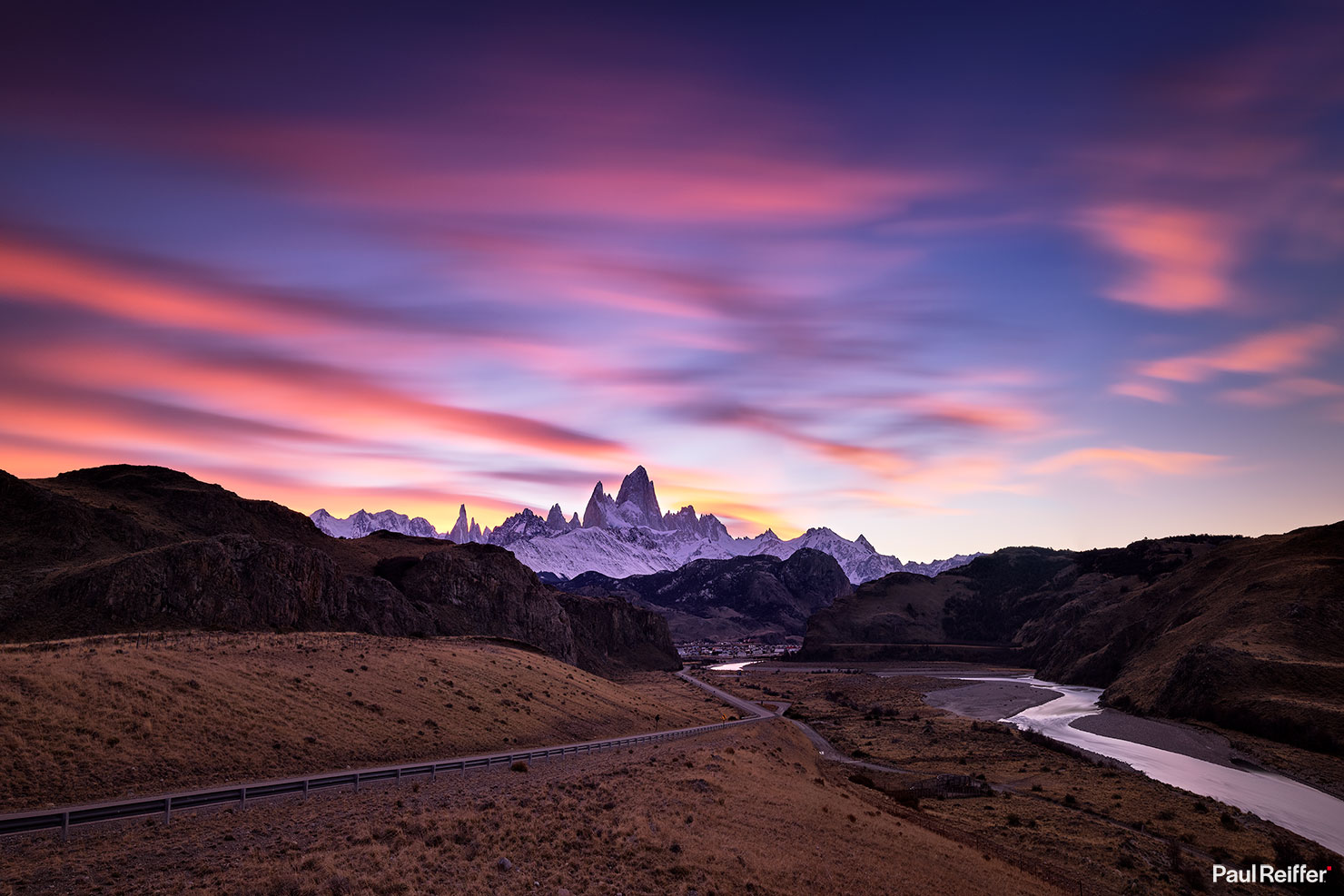
The positioning of the approach road, side by side with the river flowing through the town, just looked so inviting as far as places to visit go – and as the light faded, that invite turned into a plan to explore some of the local bars and restaurants.
Sadly, one casualty of the town’s popularity with tourists seems to be authenticity of its establishments. With menus featuring 16 different variations on Pizza and Fries, prices advertised (only) in US dollars, and almost all signage in English – you can’t help but think it’s already far away from the local Argentinian “wilderness” that people once sought as a base to explore the mountains.

That said, any warm food was good at this point – as was a beer, but with a 3am start the next morning with our guide, it wasn’t really worth dwelling on what might have been in the past.

When your alarm goes off at 2:30am in the freezing cold, and you start a 3-4 hour hike in the dark, there really needed to be a good set of scenery at the end!
Arriving at a lookout point across a frozen-tipped waterfall with Mount Fitz Roy in the background, it looked like we had the first of the ingredients needed – but it was the addition of the sun as it started to warm up the sky and deliver a soft glow over the mountain peaks that made it all worth it.
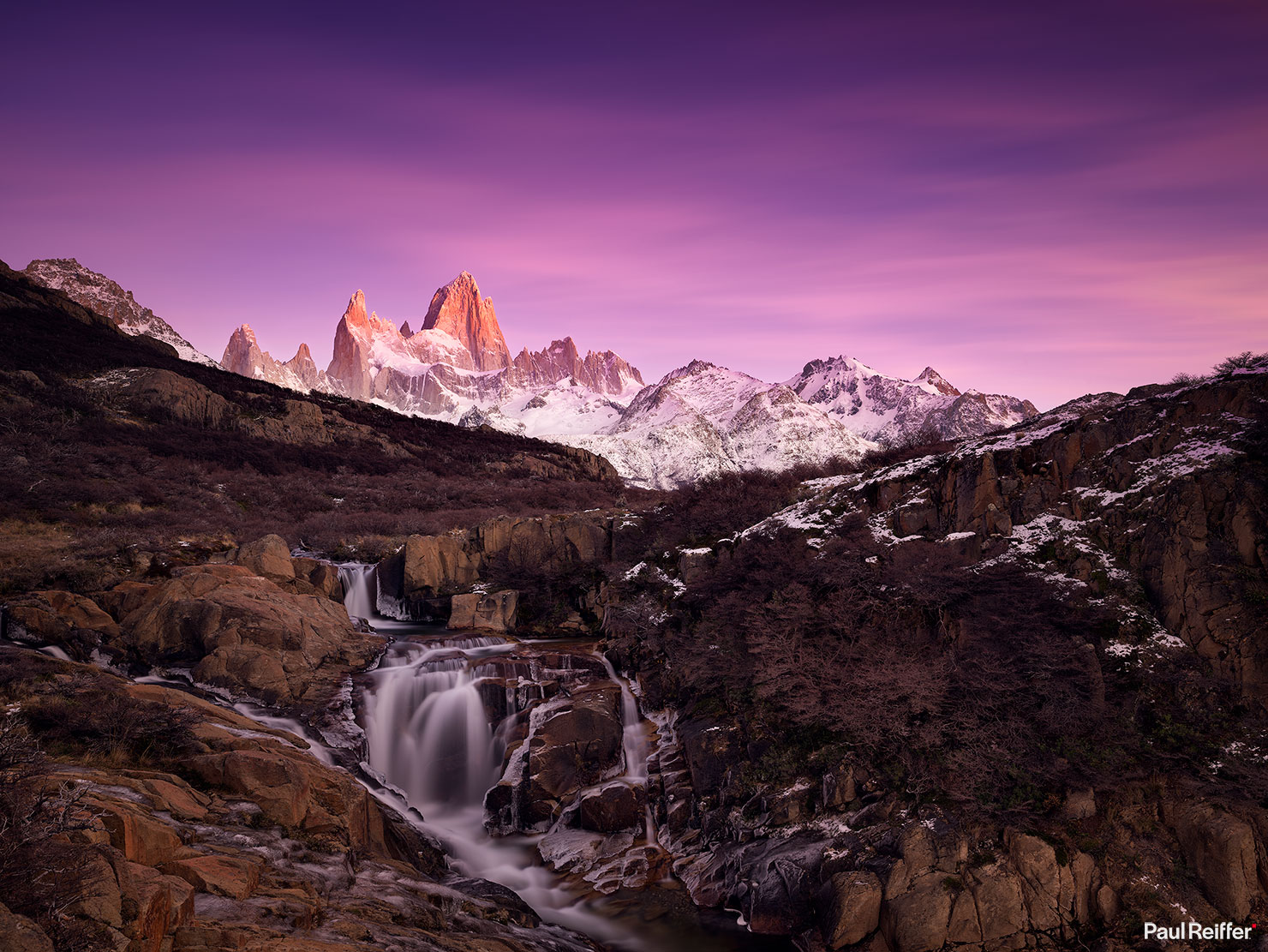
The place is simply stunning. We were cold (made worse by the icy wind hitting our sweat-covered clothes) but it didn’t matter. As the sun rose up across the sky, the temperature raised – I even ended up in a t-shirt shooting in the snow.

And what about that iconic mountain profile?
Despite being sat in the distance, the Phase One 35mm LS lens picked up every single detail in the rock face with perfection. With a wide shot, it’s sometimes easy to forget the more intricate parts of an image, but the glow on Fitz Roy was simply amazing to see up close when zoomed in.
Hiking back on ourselves a little, we found another wonderful spot that I recognised from a previous image shot in the springtime. In winter, however, the rocks had become ice-dusted and the Andes were lighting up with warm morning sunshine – another picture-perfect scene.
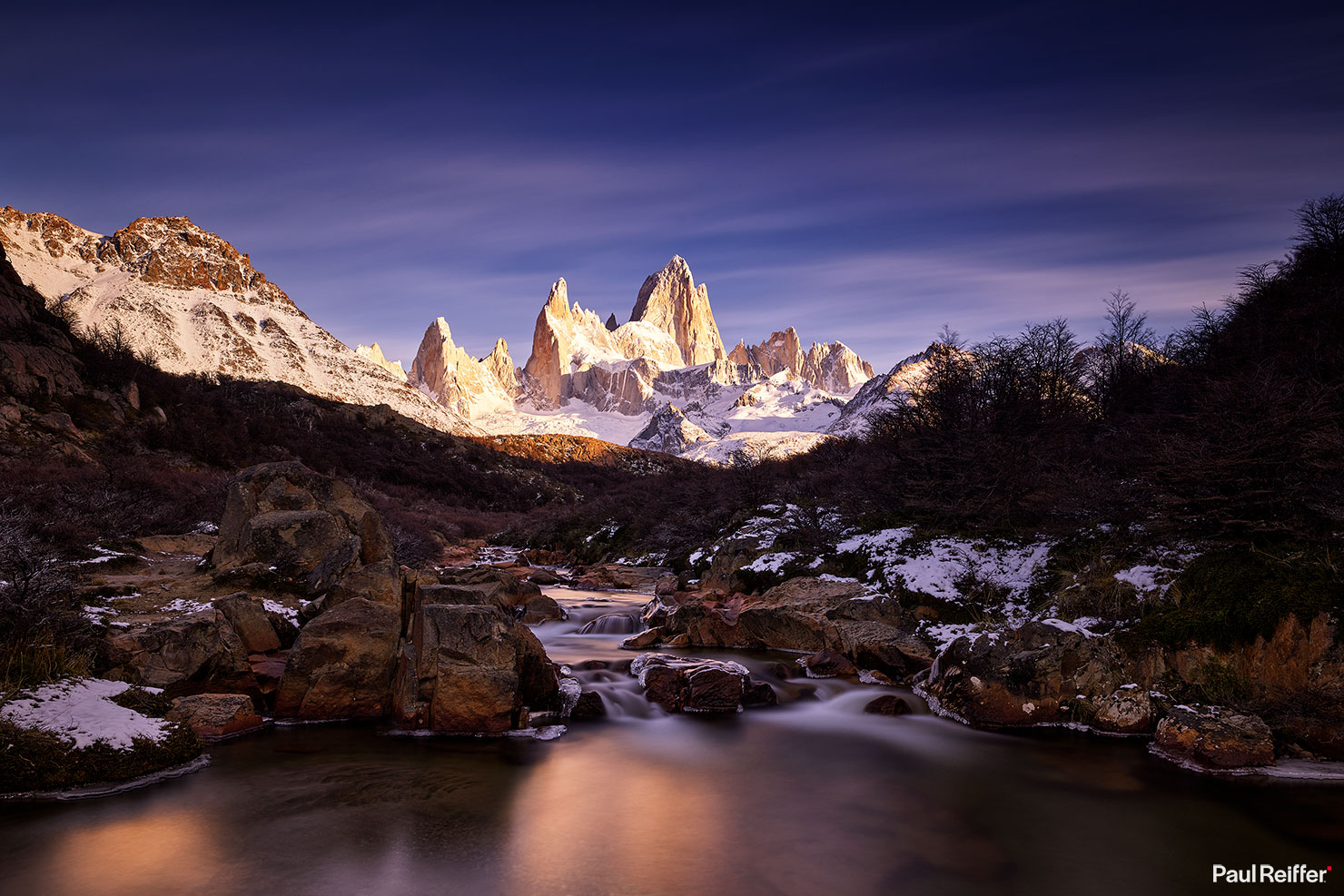
Stood there in appreciation, I must admit to being a little disturbed (after our 4 hour hike in the dark) to find two casual trekkers passing by, asking if it was “quicker to go back that way”.
“Quicker than what?” I asked – “Oh, the hour or so we’ve just walked to get here.”
If looks could kill, I’d now have an image of a dead guide to post right here.
It seems, our guide thought we’d much prefer (and enjoy) the 3am trek through the freezing cold dark night air with 20kg of camera kit on our backs – unable to see beyond our flashlights – for 4 hours to get here.
Indeed, given where we’d parked to start the hike, he also felt it important to appreciate the scenery once more, during our way back, instead of such silly (and efficient) ideas such as parking nearer to where we needed to be.
I have to give it to him – the views on the way back were incredible. But…. Yeah.
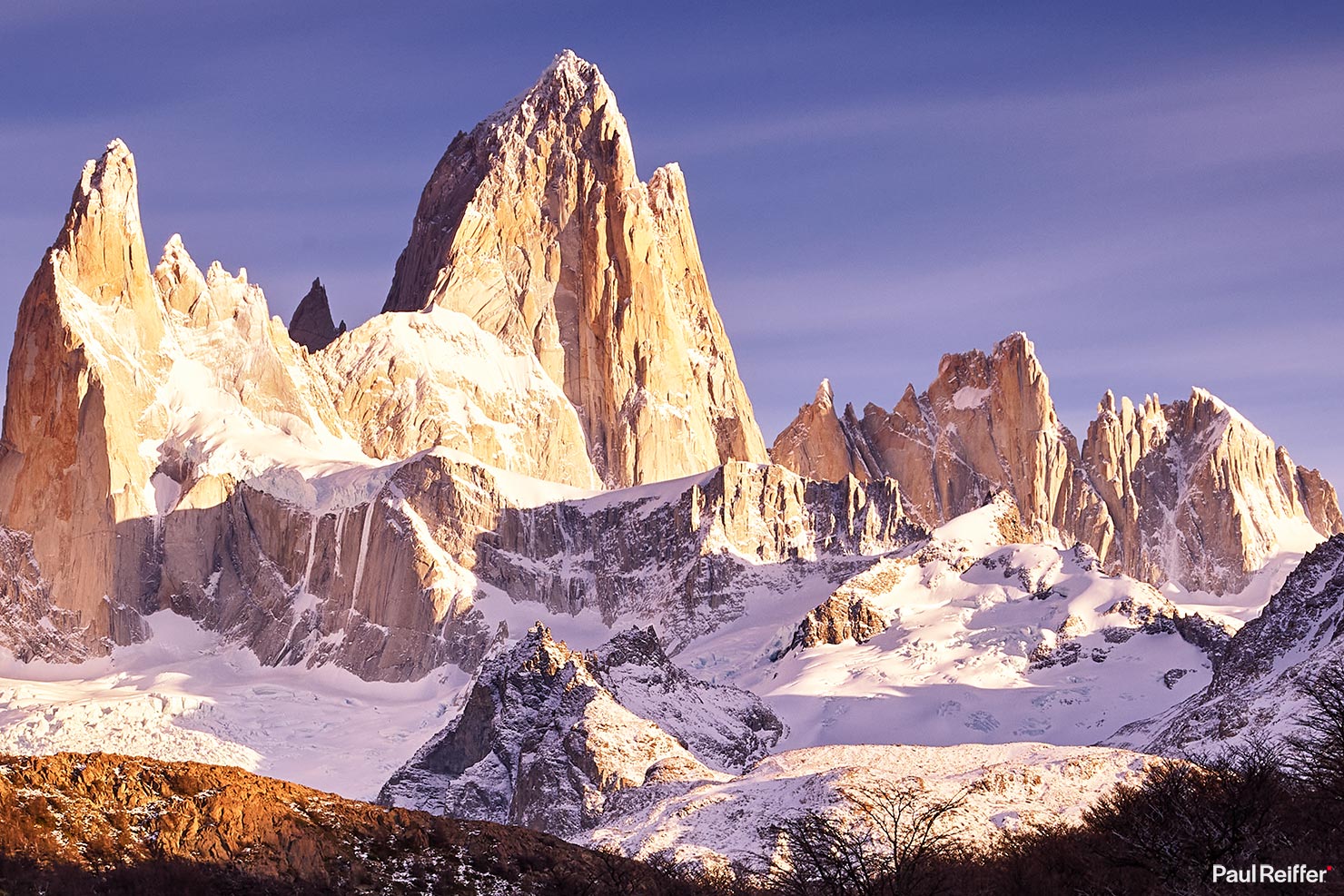
It’s always good to have a quick nap after a 10-12 hour early morning excursion, and of course, there was more of that local cuisine to try in the evening.
Sadly, I have to say, El Chaltén was responsible for one of my biggest disappointments in Argentina – a place known worldwide for amazing meats and decent wines. In our entire stay here, we experienced none.

The meat (steak?!) was tough and bland, the wines were “blah” at very best (maybe they export all of the decent stuff?) and the other options all appeared to consistently arrive as an overpriced bowl of stodge.
On checking with some of the locals, visiting off-season had (obviously) meant some restaurants were closed, but they confirmed this is what the town now offers to the swathes of tourists who now come expecting bland “international standard” food – with not a hint of local flair.
How very sad.

A new day, a new morning, a new dusting of frost on the car and we were off again in the dark. This time to capture the valley view under moonlight with some of the Southern Patagonian Ice Field’s glaciers in the shot.

Interesting though the scene was, and following a wonderful walk through the backcountry to get there, it was a scene from earlier on in our stay that had caught my eye – down by the river.
Arriving there in the afternoon, we thought there were others already sat at the same spot – how wrong could we have been. It turns out the dark “blobs” in the distance weren’t human – they were the shapes of Andean Condors, the largest flying birds in the world, taking a rest.
And wow, were these guys BIG. (Read: Stay well back.)
Stuck between the joy of having found a great composition leading into the mountains, and the concern of the giant Condors flying and circling overhead, we stuck there until the light finally began to fade.

Yes, these Patagonia sunsets really are a work of art.
With a relatively challenging exposure – from the harsh silhouette of the river bank below through to the bright fiery red sky up above, a 3-stop ND filter struggled with this one, especially given the mountain peaks – but the dynamic range of the Phase One digital back came to the rescue in the end.

So, what to do when you’ve sat waiting for 3 hours in the cold for the sun to go down?
Well, first, you enjoy it – you watch the sunset, not just click buttons – and what a moment to experience, stood out here all alone looking at the mountains.
But then, you think, “we’re here already, so why not just sit here in the car for another few hours while we wait for the stars to appear too?”
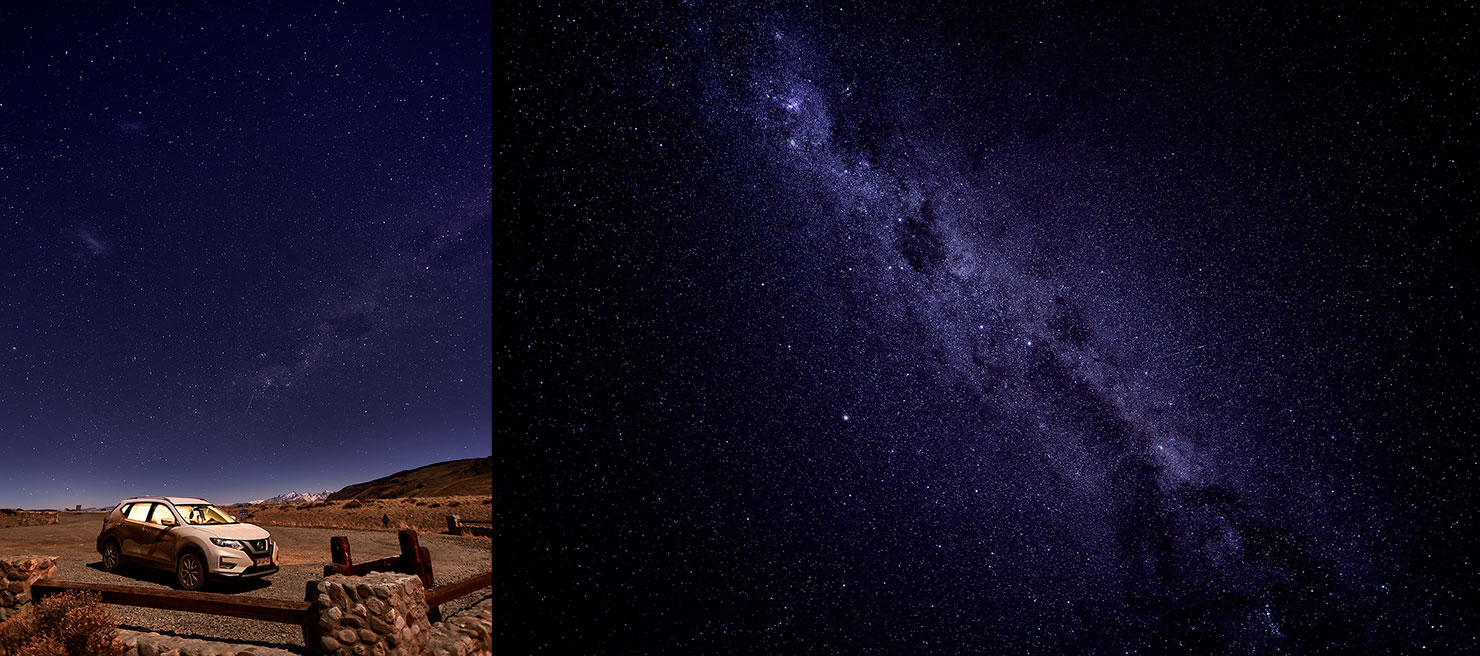
With the only light for miles around coming from the distant hint of the sunset on the horizon and the street lights of El Chalén itself, looking straight up into the sky delivered one of those perfect “wow” moments as the galactic core arrived that evening.

Even the (rare) passing traffic would prove to be a perfect lead-in to the town as we shot into the moonlight over the Andes that evening.
Now that justified sitting there for hours in the cold.
I think…
The next morning was time to leave – it had been a short stay, but I’d had enough of the world’s most miserable supermarket in the daytime (more on that later) and leathery meat for dinner each night.

As with everything in Patagonia, when it comes to travel nothing is entirely simple. We’d learned of a road closure, and were also trying to avoid the mud tracks we’d ended up on before, for the start of journey way back via Punta Arenas.
We’d be travelling through Rio Gallegos, to get to our border crossing point (after removing the mud from the license plate and ice that covered all of the car’s lights…), finally arriving once again to this mid-sized Chilean town for the night before our flights back home.
Sunset looked great from our hotel – but after over 10 hours of driving and several previous days of hiking, the best effort I could muster was to hold an iPhone up to the window.

The airport felt familiar – as if we’d only arrived a day or two ago, not the nine that had passed in between.
Amazingly, our car condition passed with flying colours (must try harder next time…) and it was off to the check-in hall where I must admit to being tempted to switch from heading back north – to instead flying further south.
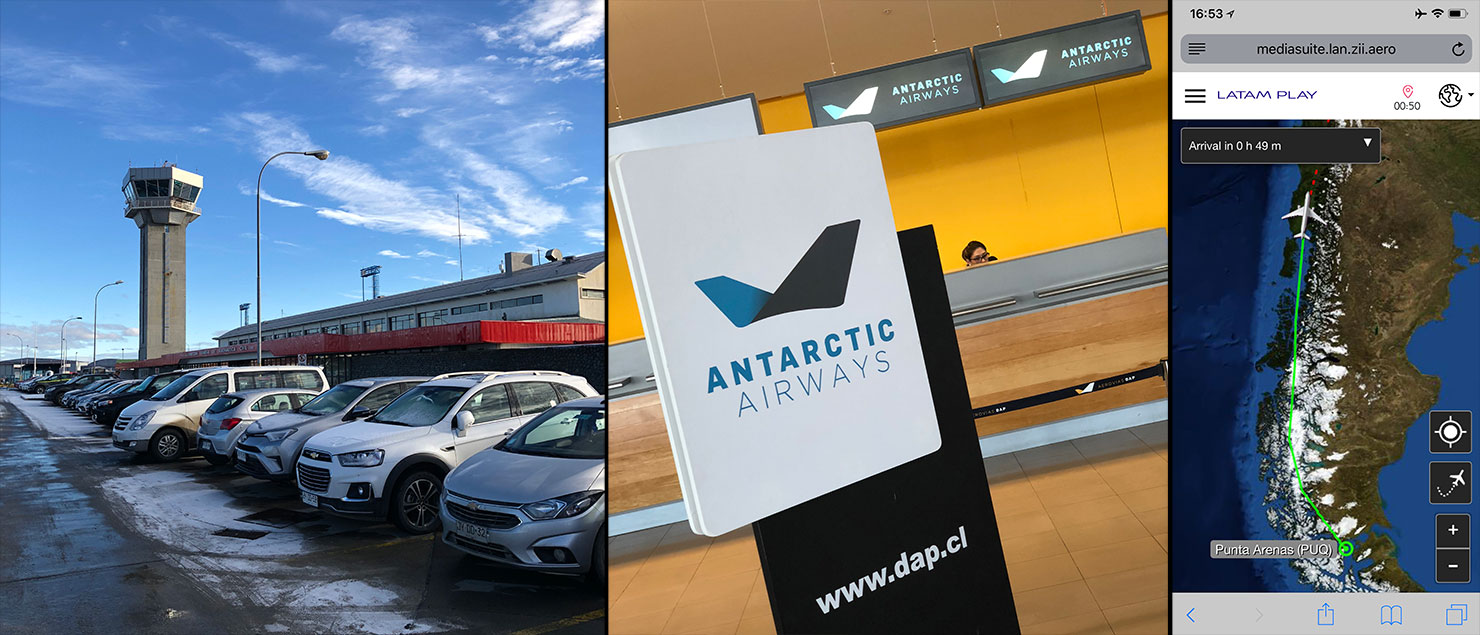
But no, not this time.
The view of the Southern Patagonian Ice Fields from the plane was amazing – those giant glaciers, the tongues forming down the mountain valleys until breaking off into the lagoons below – just wow.

What feels like it should have been a short flight seemed to take forever, landing us into Santiago after sunset.
Still, when the sun goes down in a city, the lights come up – and this was no exception from the rooftop of our hotel.

While the city itself didn’t feel that “iconic”, the soft hint of the mountain range in the background (that I initially thought was a smudge on the lens!) gave me that final sense of place, stood up here in the dark.
Yes, it’s a bustling city. Yes, there are neon lights and high-rise buildings in all directions. But there are also the surrounding giants – the mountains of the Andes – which draw so many people to South America each year.
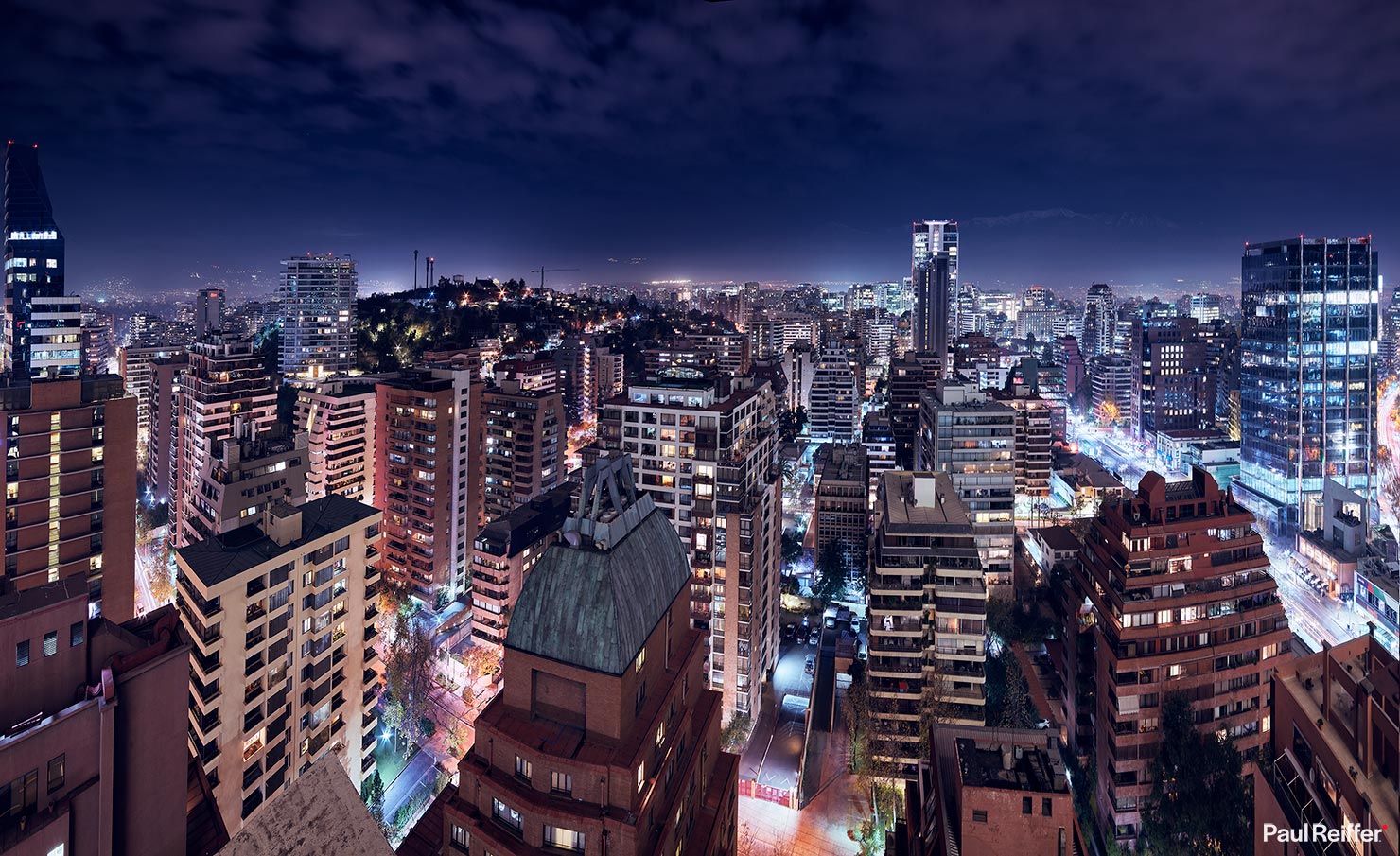
We woke up to one final surprise – British Airways had cancelled our flight to London – just wonderful.
Instead, we’d now be travelling with Iberia via Madrid.
Without much experience of Iberia, I didn’t really know what to expect onboard – but I will say it’s the best business class seat for triangular-shaped humans that I’ve ever travelled on for 13 hours.
Luckily, the scenery out of the window for the first few hours kept my mind off the need to amputate one of my legs to fit into their “suite” onboard, one final reminder of the stunning landscapes that I’d been exploring over the past 2 weeks.

And what of that supermarket that I referenced earlier?
Well, it seems that off-season (when the tourists have all but disappeared) their deliveries are reduced to old cooked meats, random crisps and “2-for-1” black, mouldy bananas. Just perfect for the bargain hunter in all of us.
On a positive, the bare shelves did force my hand into tasting and comparing loaded potato-skin, serrano ham and pure mustard packets of Lay’s at least.

…which might have helped one of our smaller friends that we discovered during our treks.
(For those who missed “episode 1” – click here to catch up!)
